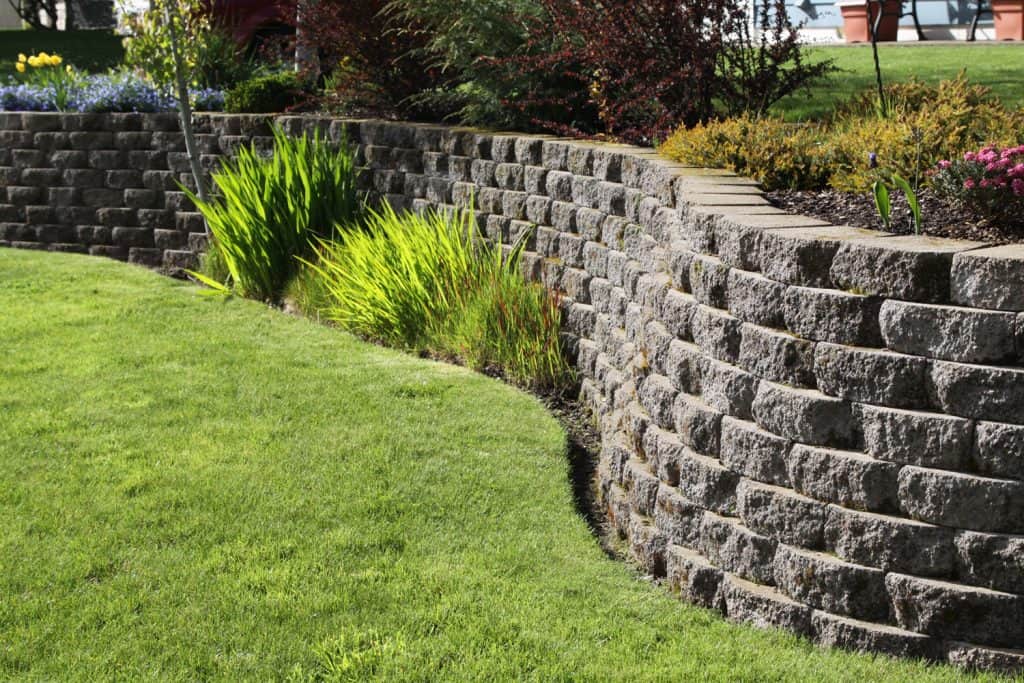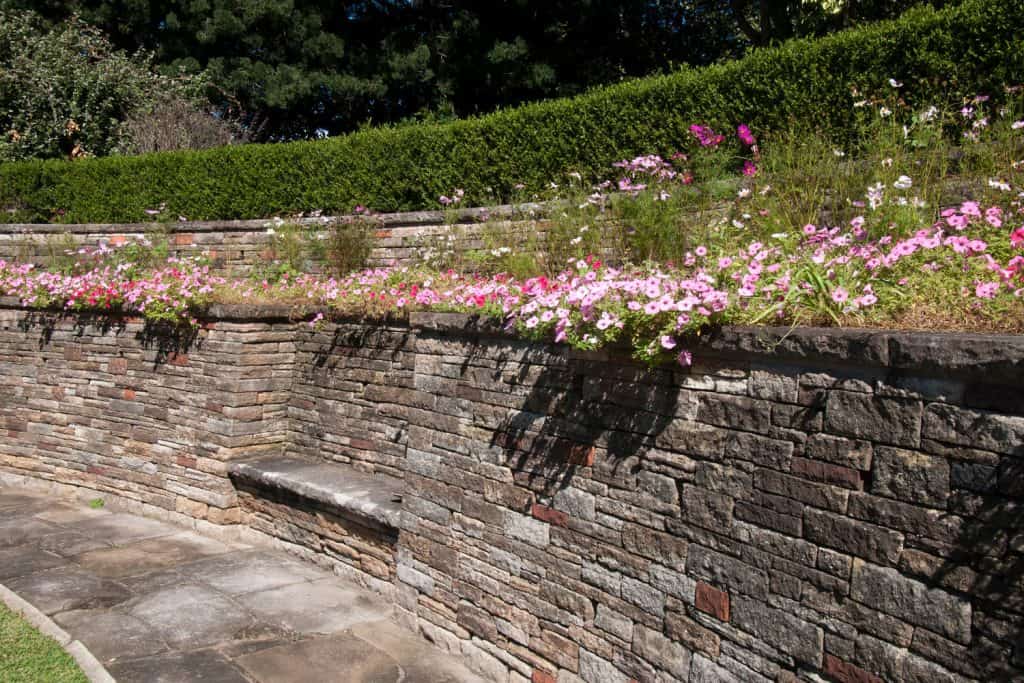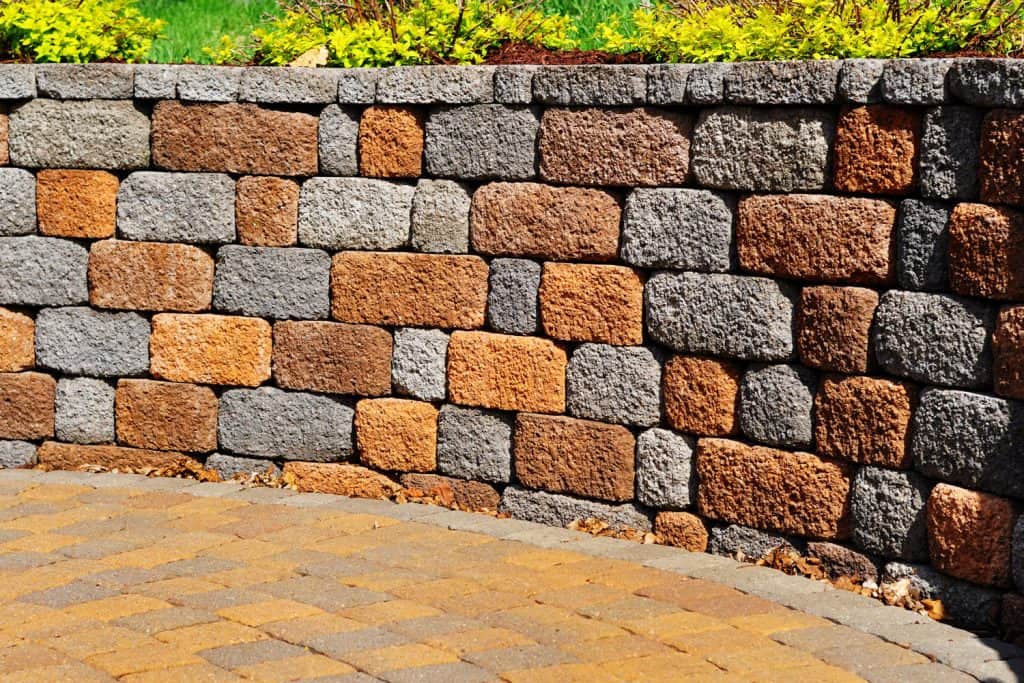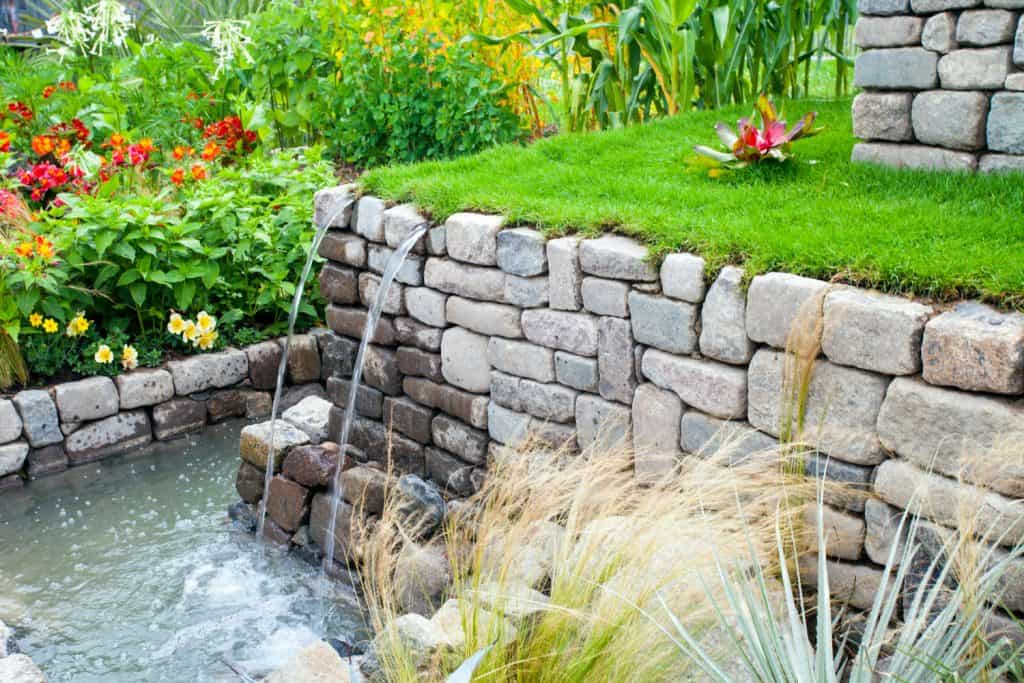Figuring out how to keep your garden from flooding can be tricky sometimes. Do you want to build a retaining wall but don't know if it will do any good preventing water? We have done plenty of research to find you the answer.
Retaining walls will help to divert water from your home and garden but won't entirely stop it. Typically, these walls work to prevent severe flooding during a storm but shouldn't be your only source of water management.
As we begin, we will cover all things retaining walls and explain how to add drainage to them. Whether you live somewhere prone to flooding or want to be extra safe, we've got you covered. With that said, let's dive right into this post!
![A gorgeous retaining wall using square marble rock and flowers on top for landscaping purposes, Does A Retaining Wall Stop Water? [And How To Add Drainage]](https://gardentabs.com/wp-content/uploads/2021/09/Does-A-Retaining-Wall-Stop-Water-And-How-To-Add-Drainage-683x1024.png)
What Are The Functions Of A Retaining Wall?
Generally, retaining walls help to keep soil from shifting or sliding down during heavy rain or flooding. Retaining walls also help keep the ground in place if there are no trees and vegetation in an area prone to sliding and erosion.

Every retaining wall essentially supports a wedge of soil, meaning the section of ground that extends past the failure plane of a wall site. Think of this as the area of land that is prone to sliding, shifting, or eroding during flooding or severe conditions.
Do Retaining Walls Keep Water Out?
When it comes to keeping water out, retaining walls work more as a filter than a barrier. Like we covered, these walls work to prevent soil from sliding during a storm by moving water away from the area.
Most times, retaining walls will help keep your garden and home safe from flooding but need to drain excess water near their base.
How Do You Put Drainage In A Retaining Wall?
To put drainage in a retaining wall, we recommend adding crushed stone or gravel behind your structure. Doing this will encourage water to exit from the drains or weep holes of your wall, rather than becoming stagnant behind it.
Generally, the more stone and porous material you place near a retaining wall, the better drainage it will have.
MIGHTY109 40 Pound Crushed Decorative Granite
This 40-pound bag of crushed granite is all-natural, great for landscaping, and ships out in two to three days.
Follow this link to view it on Amazon.
Can I Drill Drainage Holes In A Retaining Wall?
If you start to notice drainage issues, you can certainly drill holes near the bottom of a retaining wall to help with water flow. That said, this will force water into your yard during severe flooding, which is not ideal if your property is at an angle.
To stop flooding, we recommend installing a drainage pipe along your wall that leads out to a safe place for overflow.
Cleveland Tubing Expandable Landscape Drain Pipe
This expandable drain pipe extends from 6-25 feet, is Polypropylene material, and promises to bend without elbows.
Click this link to see it on Amazon here.
Where Should I Build A Retaining Wall?

Placement-wise, you should build a retaining wall near sloped landscapes, like at the base of a hill in your garden. Building your wall downhill from soil fault lines will prevent the ground from sliding and damaging your property during a flood or severe storm.
Another place to build a retaining wall is near the front of your property if you live at the top of a sloped section of land. Usually, wherever you notice soil erosion and sliding, placing a wall at its base will help to fix the problem.
How Do You Know If You Need A Retaining Wall?
Generally, it might be time to build a wall if you live somewhere prone to flooding or suffer from downhill erosion. For properties with water runoff, this can create an issue with your soil's ability to drain and withstand flooding during storms.
Another indicator your yard needs a retaining wall is if it stays damp for weeks after heavy rainfall.
How Do You Build A Retaining Wall To Divert Water?
If you struggle to keep your garden and home dry during heavy rain, building a retaining wall is easier than it seems. First, make sure to choose a stone or concrete base to keep water from running through your structure.
Next, install a drain pipe and filter cloth behind your wall to direct water away from your property and into a reservoir. Lastly, make sure to stabilize your wall with either a curved design or supporting columns to keep it from moving during intense weather.
Flex-Drain Flexible/Expandable Landscaping Drain Pipe
This outdoor drain pipe is perforated to help water flow, expands to 50 feet long, and has great online reviews.
Follow this link to see it on Amazon.
Sandbaggy Non-Woven Geotextile Landscape Fabric
This landscape filter has industrial-strength non-woven Polypropylene fabric, is UV protected, improves drainage, and comes in various sizes.
View this landscape fabric on Amazon here.
What Is The Best Type Of Retaining Wall?
From what we found, poured concrete retaining walls tend to be the best. A benefit of using poured concrete for your wall is that it doesn't require laying piece by piece together and can be formed to look like mortared stone.
Most importantly, poured concrete retaining walls aren't built to lean back against a slope, making them great for small spaces.
How High Should My Retaining Wall Be?

When it comes to height, we would recommend making your wall between three and five feet tall. Of course, this will depend on how high your yard's slope is, so make sure to speak with a contractor before making any big decisions.
With that said, shorter retaining walls tend to be cheaper to build and don't usually require anchors or expensive engineering.
Should A Retaining Wall Be Level?
Design-wise, we think it is a good idea to make your retaining wall level. Although the ground you install a retaining wall on might be uneven, it is important to smooth it out as much as possible before building.
Laying down the foundation of your wall on uneven soil can create issues with its ability to drain and withstand pressure, so this step is crucial.
How Much Does It Cost To Build A Retaining Wall?
Although prices vary, expect to pay anywhere from $3,000 to over $8,000 to build a retaining wall. Depending on what materials you use and the cost of labor, building a retaining wall can be quite a financial undertaking.
With that said, materials like cinder blocks will cost closer to $12 per square foot versus concrete being closer to $30.
Of course, this does come down to what you can afford, but choosing cheaper materials won't give your wall the same strength and quality as higher-end options will.
Is Building A Retaining Wall Worth It?
For those debating a retaining wall for their property, we do think they are worth it. Especially for anyone living near a hill or in a flood zone, having a retention wall can make a huge difference.
Retaining walls, in their design, are meant to slow the flow of rainwater, which can save your house and landscaping during a severe storm.
Although their cost might scare you, imagine the money you would need to spend to fix your entire garden or first floor of your home.
To Conclude

Whether you want to build a retaining wall or are still debating one, knowing how they work is essential. Retaining walls do not completely stop water, but they do manage overflow and prevent soil from sliding.
When it comes to drainage, your retaining wall should have drain holes or piping to direct water away from your property. Generally, laying down gravel or stone behind your wall will naturally help ease the pressure your structure experiences during extreme conditions.
Regardless, make sure to level the ground before building a retaining wall, and don't be afraid to schedule an appointment with a contractor to discuss your options.
Made it to the end? Check out these helpful garden-related posts below!
How Long Do Retaining Walls Last? [Inc. Wood Ones]
How To Integrate A Vertical Garden Into A Retaining Wall?
23 Vertical Gardening Tips That Will Take Your Green Wall To The Next Level





I have a retainer wall in South Africa which was built in the 1960’s to hold my neighbour’s soil which is higher than my property. We had a flood now in Dec 2023 and the wall collapsed. I need help with the regulations which applied then and hiw to fix it. Based in Johannesburg.